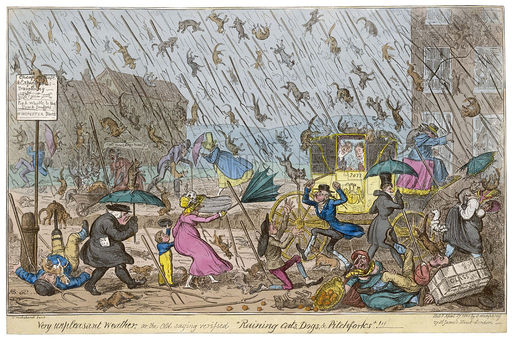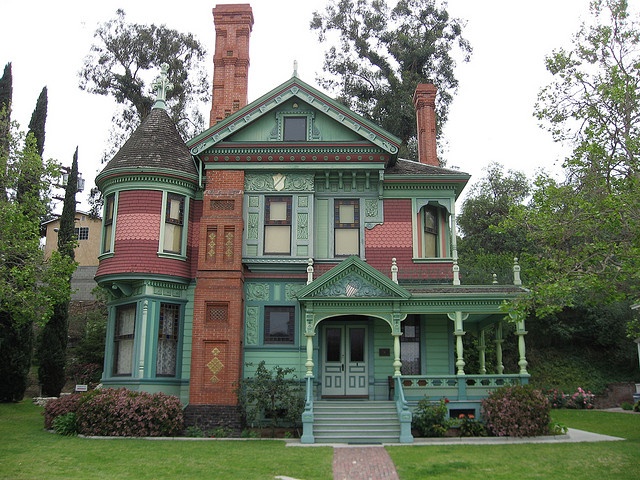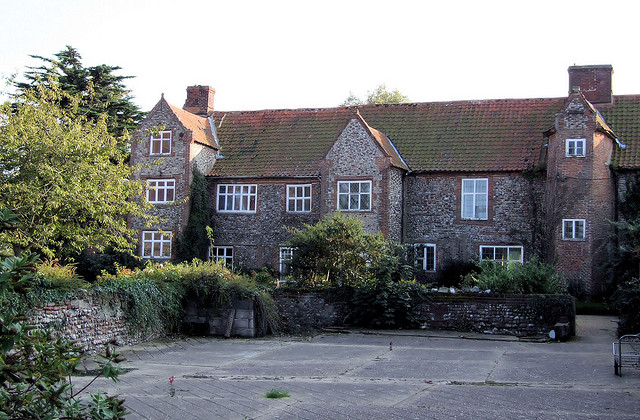Form 10 Unit 2 Houses and Homes (additional)
Some additional material to Form 10 Unit 2 Houses and Homes
Grammar: revision of used to
Speaking: interior and exterior of homes of the past
Vocabulary
1. Add two more words to the list. What type of house do you live in?
terraced mansion semi-detached studio detached cottage castle bungalow … …
(suggested answer: flat, villa, etc)
2. Match the opposites. Which adjectives best describe your house?
| modern | a expensive |
| small | b spacious |
| plain | c decorated |
| cheap | d traditional |
| attractive | e ugly |
3. List the words under the headings. Use them to talk about your house.
| Rooms | Features: Indoor/ Outdoor | Furniture/ Appliances/Others |
• attic • living room • kitchen • garden • rug • floor • fence • pillows • windows • porch • balcony • cushions • hall • fireplace • brick walls • lamp • bedroom • dining room • four-poster beds • cupboard• chest of drawers • carpet• wardrobe • mirror • fridge • cooker • towels • shower• staircase • garage • chimney
4. Reading
a. Look at the headings and the pictures. What are the texts about? Which country are these houses in?
b. Listen to the recording.
c. Read the texts. Fill in the missing words to make the sentences complete.
Скачать аудио (duration 1,53 min)
Victorian houses
The early Victorians liked large houses with plenty of decoration. Later in the Victorian period, houses were simple 0) and plain. Wealthy people used to live 1) ….. large detached houses with lots of rooms and expensive furniture.
Servants used to live 2)…. the top floor of the house or the attic. The exterior of the house 3) …. a work of art with a sleep tiled roof, tall chimney pots and large bay windows 4)…. stained glass. Sometimes they had a front porch (портик; крытая галерея, крыльцо) and steps up to the front door. Working people used to live in terraced brick houses with a simple exterior. Those houses were small with two or four rooms. 5)……..was no electricity no water and no toilet.
*bay window — a curved area of a room or building that sticks out (выделяется) from the rest of the building
Elizabethan houses
Elizabethan manor houses often had an E- shape to show respect for 6) …. queen. They had brick walls with strong wooden frames. The houses were spacious and comfortable with a large hall, a dining room and 7) ….. bedrooms.
The furniture was big and elaborate and four-poster beds were very popular.
Many people used to have servants. 8)…. used to live in rooms in the attic.
6. Preparing to speak: underline the words that describe interior and exterior and special features of the houses so that to use them in your future description.
Answer Key:
exterior: steep tiled roof/tall chimney pots/bаy windows/front porch / steps to the front door/brick walls/wooden
frames/E-shape
interior: lots of rooms / expensive furniture / large hall / dining room / bedrooms / four-poster beds/attic
special features: simple /plain / large detached houses /stained glass / terraced brick houses/small/toilet/manor
houses / spacious / comfortable
7. Speaking
Suggested Answer Key
Victorians had large, detached houses with many rooms and expensive furniture. On the outside, they had steep tiled roofs, tall chimney pots and large bay windows. Sometimes, they had front porches and steps up to the front door.
Elizabethan houses had brick walls with wooden frames. They had many comfortable rooms. The rooms had big furniture, and bedrooms sometimes had four-poster beds.
8*. Listening
There’s a very interesting idiom in connection with Elizabethan style in architecture. It’s about cats and dogs. Can you guess which one?

«It’s raining cat’s and dogs» An interesting phrase, isn’t it?
The phrase isn’t related to the well-known antipathy between dogs and cats, which is exemplified in the phrase ‘fight like cat and dog’. Nor is the phrase in any sense literal, i.e. it doesn’t record an incident where cats and dogs fell from the sky. Small creatures, of the size of frogs or fish, do occasionally get carried skywards in freak weather. Such involuntary flight must also happen to dogs or cats from time to time, but there’s no record of the events causing this phrase to be coined. No English meteorological records inform about this.
It has been suggested that cats and dogs were washed from roofs during heavy weather. This is a widely repeated tale which became very popular with the e-mail message «Life in the 1500s», which began circulating on the Internet in 1999. Here’s the relevant part of that:
I’ll describe their houses a little. You’ve heard of thatch roofs (соломенная крыша), well that’s all they were. Thick straw, piled high, with no wood underneath. They were the only place for the little animals to get warm. So all the pets; dogs, cats and other small animals, mice, rats, bugs, all lived in the roof. When it rained it became slippery so sometimes the animals would slip and fall off the roof. Thus the saying, «it’s raining cats and dogs.»
Do you believe it?
This is nonsense of course. In order to believe this tale we would have to accept that dogs lived in thatched roofs, which, of course, they didn’t. Even accepting that bizarre idea, for dogs to have slipped off when it rained they would have needed to be sitting on the outside of the thatch — hardly the place an animal would head for as shelter in bad weather.
(Adapted from: http://www.phrases.org.uk/meanings/raining%20cats%20and%20dogs.html)
PS: One supposed origin is that the phrase derives from mythology. Dogs and wolves were attendants to Odin, the god of storms, and sailors associated them with rain. Witches, who often took the form of their familiars — cats, are supposed to have ridden the wind. Well, some evidence would be nice. There doesn’t appear to be any to support this notion.
8. Test (reflection). Which houses represent Victorian and which Elizabethan architectural styles?
(pictures)
Использованные источники:
1) Upstream Elementary SB
2) http://www.phrases.org.uk
3) Pictures from the Internet




Splendidly done! Thanks a lot.
It seemed to me I had been to England again.
Thank you, Kate Calf. Glad to see you here again.